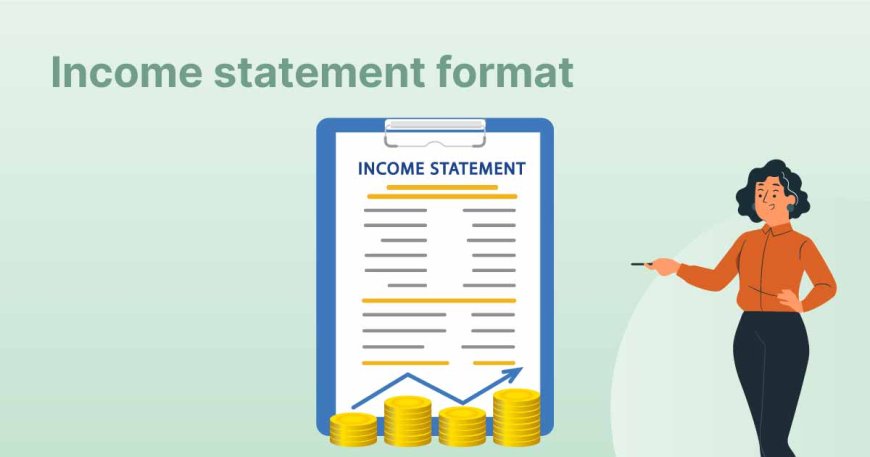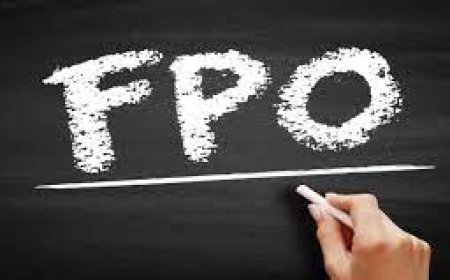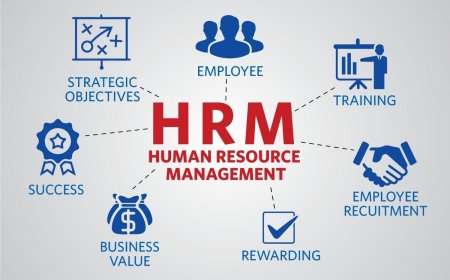INTRODUCTION TO INCOME STATEMENT FOR KIDS AND ADULTS

INCOME STATEMENT :
An income statement is like a report card for a business. Just like you receive a report card in school to see how well you're doing, a business uses an income statement to see how well it's doing financially.
In an income statement, we look at all the money the business earns and all the money it spends. It's like counting how much money comes in and how much goes out. We also consider different types of expenses, like paying for supplies, rent, salaries, and taxes.
In India, businesses use income statements to keep track of their financial health and make sure they are meeting their financial goals. By looking at the income statement, they can see if they need to make any changes to increase their profits or manage their expenses better.
FORMULA:
Net Income = Total Revenue/Income - Total Expenses
i.e; "Total Revenue" represents the total amount of money earned by a business from its sales or services. "Total Expenses" refers to the total costs incurred by the business, including expenses such as raw materials, salaries, rent, utilities, and taxes.
When we subtract all the money the business spends from all the money it earns, we get the "Net Income." Net Income shows whether the business made a profit or a loss. If the number is positive, it means the business made more money than it spent and earned a profit. If the number is negative, it means the business spent more money than it earned and had a loss.
EXAMPLE: (For Kids)
1) Ice Cream Stand
Revenue: The money earned from selling ice cream cones, which is ₹500.
Expenses: The costs incurred to run the ice cream stand, including the cost of ingredients and ice cream supplies (₹100), rent for the stand (₹50), and the electricity bill (₹20).
Net Income (Profit): The net income is calculated by subtracting the total expenses from the revenue. In this case, it is ₹500 - (₹100 + ₹50 + ₹20) = ₹330. This means that after deducting all the expenses, the ice cream stand made a profit of ₹330.
2) Handmade Jewelry Business
Revenue: The money earned from selling handmade jewelry, which is ₹800.
Expenses: The costs incurred to create and sell the jewelry, including the cost of beads, wires, and other materials (₹200) and the packaging and shipping expenses (₹100).
Net Income (Profit): The net income is calculated by subtracting the total expenses from the revenue. In this case, it is ₹800 - (₹200 + ₹100) = ₹500. This means that after deducting all the expenses, the handmade jewelry business made a profit of ₹500.
3) Cake Baker Income Statement:
Imagine someone who bakes cakes and sells them. Their income statement would include how much money they earned from selling cakes. They would also consider the costs of buying ingredients like flour and sugar. The income statement would reveal their profit by subtracting the costs from their earnings.
4) Grocery Store Income Statement:
Think of a grocery store where people buy food items. Their income statement would show how much money they made from selling groceries. They would include the costs of buying the items from suppliers and running the store. The income statement would calculate their profit by subtracting the costs from their earnings.
5) Bookstore Income Statement:
Suppose you own a Bookstore where people use to buy books, their income statement would show how much money you make from selling books. They would include the costs of buying the items from suppliers and running the store. The income statement would calculate their profit by subtracting the costs from their earnings.
EXAMPLE: (For Adults)
1) Restaurant Owner
Revenue: The money earned from food sales, which is ₹2,00,000.
Expenses:
Cost of ingredients and supplies: The amount spent on purchasing food items and other supplies for the restaurant, which is ₹80,000.
Staff wages and salaries: The amount paid to the restaurant employees, including chefs, waitstaff, and kitchen staff, which is ₹60,000.
Rent for the restaurant: The monthly rent paid for the restaurant premises, which is ₹30,000.
Utilities (electricity, water, gas): The expenses related to electricity, water, and gas usage for running the restaurant, which is ₹10,000.
Marketing and advertising expenses: The amount spent on promoting the restaurant and attracting customers, which is ₹5,000.
Net Income (Profit):
Revenue - Expenses = ₹2,00,000 - (₹80,000 + ₹60,000 + ₹30,000 + ₹10,000 + ₹5,000) = ₹15,000.
After deducting all the expenses, the restaurant owner made a profit of ₹15,000.
2) Software Engineer (Salaried)
Revenue (Salary): The monthly salary earned as a software engineer, which is ₹75,000.
Expenses: The personal expenses incurred by the software engineer, including rent for accommodation (₹20,000), transportation expenses (₹5,000), utilities (electricity, water, internet) (₹3,000), groceries and dining out (₹10,000), and insurance premiums (₹2,000).
Net Income (Profit): The net income is calculated by subtracting the total expenses from the revenue. In this case, it is ₹75,000 - (₹20,000 + ₹5,000 + ₹3,000 + ₹10,000 + ₹2,000) = ₹35,000. This means that after deducting all the expenses, the software engineer had a net income (profit) of ₹35,000.
3) Freelance Graphic Designer
Revenue: The income earned from graphic design projects, which is ₹50,000.
Expenses: The costs incurred to run the freelance graphic design business, including software subscriptions (₹2,000), internet and phone bill (₹1,500), rent for the home office (₹10,000), and professional development courses (₹5,000).
Net Income (Profit): The net income is calculated by subtracting the total expenses from the revenue. In this case, it is ₹50,000 - (₹2,000 + ₹1,500 + ₹10,000 + ₹5,000) = ₹31,500. This means that after deducting all the expenses, the freelance graphic designer made a profit of ₹31,500.
CONCLUSION:
It's important to keep track of income statements to understand how well a business is doing or how much money is left after paying for expenses. This helps businesses and individuals make better decisions about saving, spending, and managing their finances.
What's Your Reaction?
 Like
0
Like
0
 Dislike
0
Dislike
0
 Love
0
Love
0
 Funny
0
Funny
0
 Angry
0
Angry
0
 Sad
0
Sad
0
 Wow
0
Wow
0






































































